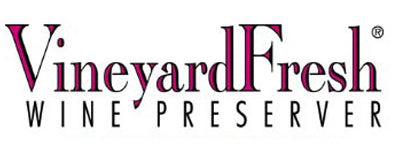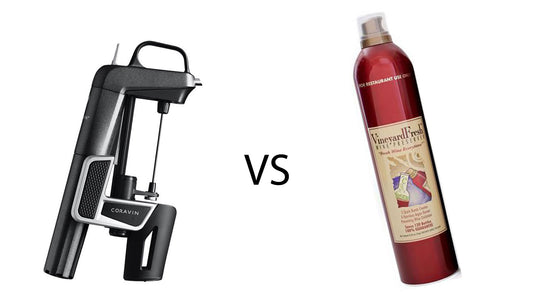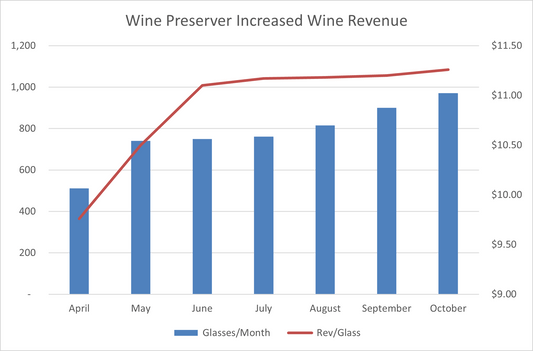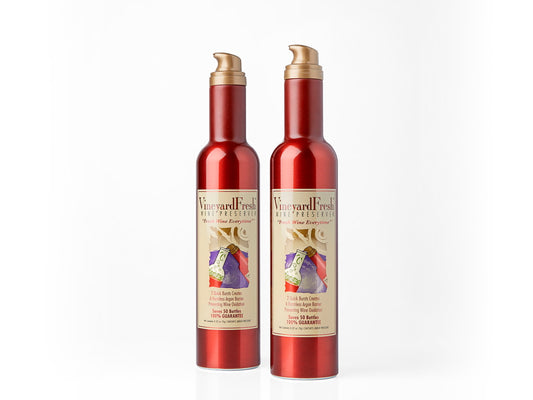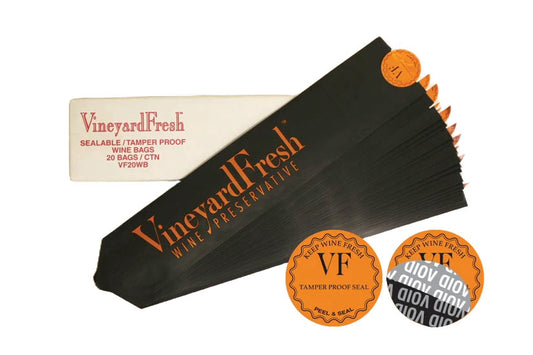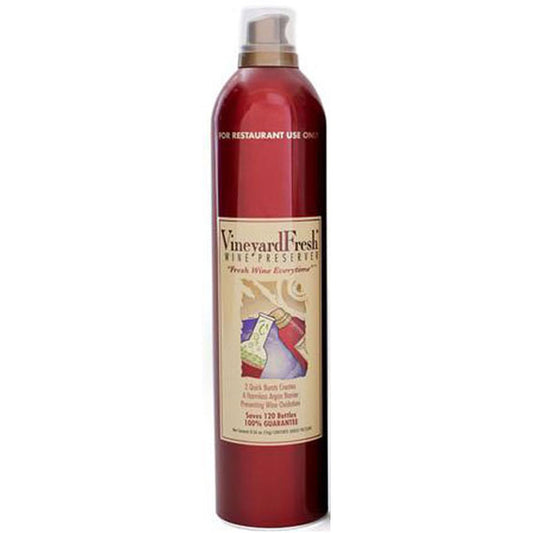When trying anything new, we all tend to be skeptical. It isn't any different with new VineyardFesh customers. Quite often, they'll ask "How do you know it works?"
Because science.
The Science of Argon Wine Preservation
Since argon gas is colorless, odorless, tasteless, and a noble gas, it's hard to "see" it work. We know from experience that treating open bottles of wine with VineyardFresh - or any 100% argon based wine preserver - keeps the wine tasting fresh.
But, can we measure this? How do you measure something subjective like "flavor" and "freshness"?
Well, it turns out, you can. Specifically, by using cloudiness in the wine as a measure of oxidation. You see, as wine oxidizes (i.e. goes bad), cloudiness begins to appear. You may know this in extreme cases where there is a brown or dull tint to the wine. Wine Folly has a nice side-by-side example:

Kind of like a sliced apple left on the counter, when a bottle of wine is left open and unprotected, the wine begins to oxidize and the flavor goes bad.
By spraying VineyardFresh Wine Preserver into the open bottle of wine, you place a thin protective layer of argon gas on top of the wine. This thin layer of argon (it only requires two short bursts of VineyardFresh) is a colorless, odorless, non reacting noble gas - a cozy blanket preventing your wine from oxidizing.

Prove It! Show How VineyardFresh Stops Oxidation
OK, now it's time to science the sh&^ out of this.

Time to put our wine preserver to the test. As mentioned above, oxidation degrades the taste of wine. Over time, as your wine oxidizes, it becomes cloudy and brown tinted. This cloudiness and tint can be measured, and it is specifically called...turbidity.
Turbidity is a measure of clarity, color, and haze present in a liquid. Often talked about in terms of water quality, but in our case - wine quality.
Using a Spectrometer, we are able to measure the turbidity change in bottles of wine.
Below are the results.
Argon Wine Preserver Test Results
Here's the test:
- Measure the turbidity of opened bottles of wine, compared to unopened bottles of wine
- Continue to measure turbidity of the open bottles of wine after one, two, and three weeks
- Graph the results and draw conclusions
Here's the results:

Fun Facts About These Test Results
- After one week, the untreated bottle of red wine has a 13% increase in cloudiness and haze. The flavor has already started to change
- After two weeks, the red wine turbidity has increased 25%. No good
- And finally, after three weeks, the untreated bottle of red has a 61% increase in cloudiness and haze. Yuck - it's vinegar
- Even more dramatic results - white wines oxidize fast. Why don't we talk about whites much?
- Because we put open bottles of white in the fridge. Cold temperature significantly slows the rate of oxidation. So the need for using a wine preserver is significantly less.
- Not convinced? Put your next open bottle of white on the counter for a few days, and then taste it. Yuck
